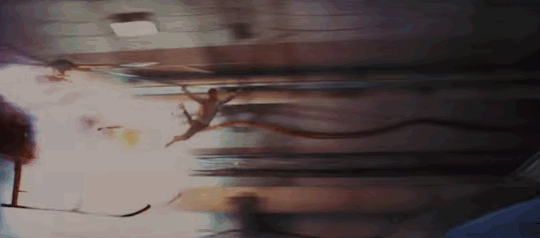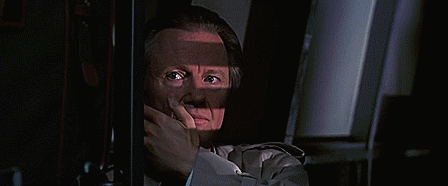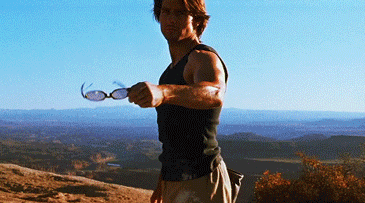Impossible to Please: How “Mission: Impossible” Made Fans Happy By Ignoring Them by Rob Thomas
By Yasmina Tawil

When a movie star stands on the red carpet at his latest premiere and tells an interviewer, “We made this one for the fans,” what does he mean? It sounds on the surface like a vaguely populist “Give the people what they want!” sort of statement, that the filmmakers had the hardcore supporters of the franchise in mind—rather than the studio, or the critics, or the overseas markets—when they made the movie.
The idea of “fan service”—whether it’s putting in inside jokes and other Easter eggs that only the faithful will understand, or structuring entire films around beloved storylines and characters—is a powerful one in modern risk-averse Hollywood. Look at the Marvel movies, which have been wildly successful by putting the comic book company in charge of the franchise. Characters and storylines adhere to the mythology that the fans already know; the movies themselves are treated like comic book runs, the latest chapters in a sprawling, never-ending story arc.
There have been some fine Marvel movies. But how much creative freedom can a director have in making a movie that’s always the middle chapter in a story written by the higher-ups, one that fans already buy rote? Each movie just pushes the engine forward a little more and no director can stray too far from the tracks without potentially derailing the entire franchise and ticking off fans.
But that’s not the only way to run a franchise. Look at the Mission: Impossible series, which, beginning with Brian De Palma’s first entry in 1996, stands as a bold rebuke to the idea that the fans of a franchise are its best caretakers. A popular series in its time, the original TV show from the late ‘60s and early ‘70s had not aged well over the years, revived once as a middling reboot with an aging Peter Graves in the late 1980s. Paramount Pictures had the film rights for years, but by the time Cruise got involved as the first project for his new production company, if people remembered it, they remembered it first for Lalo Schifrin’s iconic theme music.
Which meant it was ripe for Cruise to turn it into his own action-adventure star vehicle. And that it was also ripe for De Palma, never shy about putting his influences and obsessions into his films, to put his stamp on it as a director. That there wasn’t much of an ardent fan base ended up working in the movie’s favor, because Mission: Impossible was a devalued franchise; the audience was too young to be fans of the show, so nobody would be upset if anyone tinkered with it.
And boy, did De Palma tinker. Signed on by Cruise before a screenplay was finished—De Palma would bring in screenwriters Steve Zaillan, David Koepp, and Robert Towne to work on it, sometimes on competing versions—De Palma likely had a freer hand to orchestrate the results than if he had worked from a finished screenplay. The result has his fingerprints all over it: Whip off the lifelike summer blockbuster mask, and there’s a Brian De Palma film underneath.

De Palma has never been overly interested in plot, and the story in Mission: Impossible is largely a tangled string on which to hang moments of pure unbridled cinema. Mission: Impossible contains three masterfully orchestrated set pieces, one at the beginning, middle, and end, that are simultaneously quintessential De Palma and rousing popcorn entertainment. The helicopter-train chase at the finale may seem like typical action-adventure fare, but the other two have the elegant, sinuous suspense and dazzling technique of vintage De Palma. The opening (which we’ll get to in a bit) shows a perfectly calibrated team mission that goes wrong before our eyes. But the undisputed classic in the film is the Rififi homage midway through in which Ethan Hunt descends into a sound-sensitive top-secret CIA office to steal a file, silently.
And while the film avoids the flourishes of blood that marked De Palma’s other films in order to secure a PG-13 rating, there are some macabre touches. Trapped on the roof of an elevator speeding upwards, a character looks up at the spikes pointing down from the ceiling and screams, one of the spikes starting to slide neatly into his open mouth before De Palma cuts away.
De Palma has nursed a lifelong obsession with deceit. In the documentary De Palma, we learn this might have stemmed from his father’s adultery, which De Palma uncovered by following his father to his mistress’ house and confronting them both with a knife. With its double-crosses, masks and disguises, the world of espionage is an ideal world for him to play with that obsession. One could even see a little homage to Blow Out, perhaps, in the scene in which Jim Phelps (Jon Voight) is apparently knifed on the St. Charles Bridge in Prague and falls into the water. Hunt sees the murder through Phelps’ surveillance camera, only to learn later that the entire scene was staged for the camera for his benefit. In Blow Out, a car goes into the water in a staged accident, but a piece of audiotape recorded by the hero provides clues to the real story. Later, there’s a scene in which Phelps resurfaces to tell Ethan another story about what really happened on the bridge. As he’s telling the story, Ethan realizes that his mentor is lying to him, and envisions the truth in his mind. Father figures, like De Palma’s own father, are not to be trusted.

But the most De Palma moment in Mission: Impossible is also, in an irony that De Palma himself probably appreciates, the one that was dictated not by artistic concerns but business ones. The old Mission: Impossible was an ensemble show; Graves’ Phelps may have been the hero, but the missions were executed by a well-coordinated team of spies, each with their own specialties. Great for a TV show, not so great for Tom Cruise. Another director might have gone a safer route, dispensed with the team concept entirely, and sent Ethan Hunt on a solo mission.
But De Palma saw an opportunity for a brilliant exercise in misdirection.
Mission: Impossible begins with Hunt as a young member of the IMF team, led by Phelps. The opening credits mimic those of the TV show, with Schifrin’s score matched to rapid-fire flash-forwards of Hunt’s team (including Voight, Emilio Estevez, and Kristin Scott Thomas) at work. The shots are too tantalizingly quick to discern what’s going on, but they prime the audience with a whiff of intrigue and danger.
From there, we see the team go about their mission, briskly outwitting their foes in a castle in Prague and preventing the sale of some top secret documents. And then, just when the audience thinks the mission is over, De Palma jerks the rug out. Everybody on the team is abruptly killed—stabbed, blown up in a car, impaled on an elevator—except for Ethan. It’s brilliantly perverse – Hitchcock’s influence on De Palma is well-known, and here turns most of the supporting cast into Janet Leigh from Psycho – or Angie Dickinson in Dressed to Kill. And it wonderfully sets the who-can-you-trust tone for the rest of the film (and the franchise). What’s more, De Palma gleefully blows a raspberry at any erstwhile fans of the original TV show by making Phelps himself the villain. It’s as if J.J. Abrams revealed at the end of his Star Trek reboot that James T. Kirk was a Romulan spy. Within the sleek exterior of a summer action-adventure star vehicle lurks the motor of a manipulative exploitation movie. No surprise that Graves, Martin Landau, and the other cast members of the original TV show reportedly hated De Palma’s version.
But here’s the coup de grace: When you watch Mission: Impossible a second time, you realize that many of the brief shots in those opening credits are actually from the supporting characters’ moments of death. Like a great confidence artist, De Palma has shown us exactly how he’s going to fool us before he got away with it.

The first Mission: Impossible was a box office smash, and it set the tone for a franchise that would hire directors with distinctive styles and not hold them back. Mission: Impossible 2 let John Woo be John Woo, playing up the operatic action elements, hero-villain duality, and dramatic slo-mo. J.J. Abrams was a first-time director when he was hired for Mission: Impossible III, but he had a hit show in Alias, and III similarly focused on the tension between the on-duty and off-duty lives of a secret agent. Brad Bird constructed intricate action sequences for Mission: Impossible — Ghost Protocol that had the comic zaniness of animated films while emphasizing real physical stakes. And in Mission: Impossible - Rogue Nation, Christopher McQuarrie (The Usual Suspects) created an elegant throwback spy film in many ways, with crackling dialogue and a dynamite femme fatale in Rebecca Ferguson.
As the series has gone on, though, and each builds on what has come before, a recognizable formula has started to solidify. Each movie will have incredible stunts (often featuring Cruise), best-laid espionage plans going awry requiring seat-of-the-pants improvisation, a team of loyal confederates providing comic relief and occasional assistance, and, of course, Schifrin’s score kicking in at just the right moment.
Pre-production is now starting on Mission: Impossible 6, and for the first time, the franchise is inviting a director back—McQuarrie is writing and directing for the second time. It’s one thing to stake out territory in a new franchise by thumbing one’s nose at the few remaining fans of the old regime. But, now that the mission has gone on for 20 years, the Mission: Impossible movies seem to be getting more interested in protecting fans – theirs.


